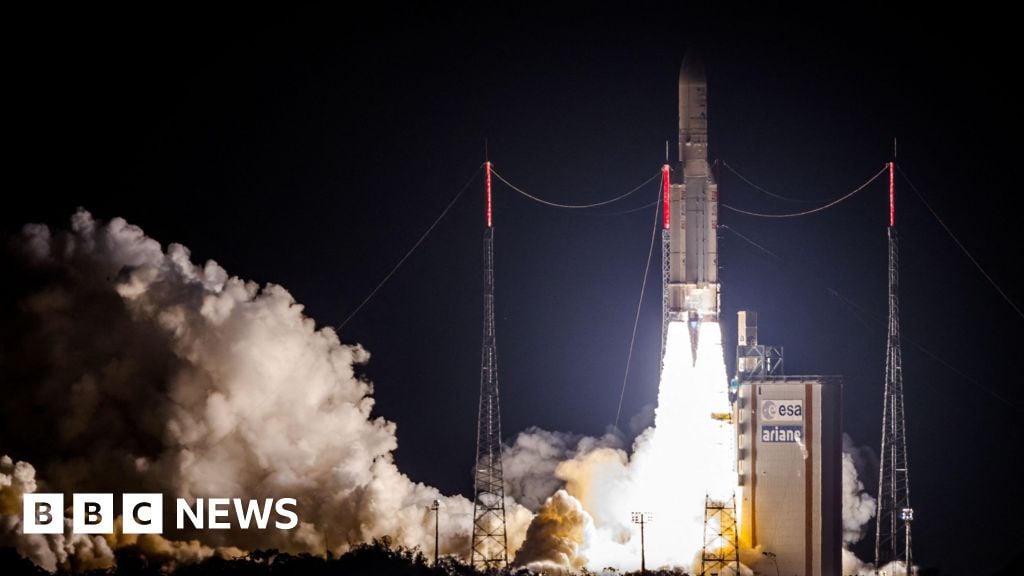- cross-posted to:
- [email protected]
- cross-posted to:
- [email protected]
A communications satellite designed and built by embattled aerospace giant Boeing has broken up in orbit.
The satellite’s operator, Intelsat, has confirmed the “total loss” of iS-33e, which has affected customers in Europe, Africa and parts of the Asia-Pacific region.
Intelsat also says it has taken steps to complete “a comprehensive analysis” of the incident.
Boeing has been facing crises on multiple fronts, with a strike at its commercial plane business and issues with its Starliner spacecraft.
An alert on the platform said the US Space Forces also said it is “currently tracking around 20 associated pieces” of the satellite.



How… How did it break up in orbit? It should be effectively weightless, and depending on the altitude it shouldn’t experience much, if any, atmospheric drag, right? Did they forget to fasten the bolts on it or something?
Oh no, orbit is actually quite hostile. Specially unexpected torque forces from spinning in unplanned ways. And there’s very little but definitely present atmospheric drag. Not so much from the density of the air but from the extremely high speed it’s moving. Then there’s orbital debris. Also extreme and fast changes in temperature from the sun. Not to forget cosmic radiation.
This thing was in geostationary orbit, that’s a long way away where there is no atmospheric drag. There’s also very little orbital debris there because there is less stuff launched that far out and the orbit is much bigger, so the chances of a collision are vanishly small. Temperatures are an issue, but this thing lived out there for years, so it probably was designed pretty well for that. Same with unexpected movement, any leaks or software errors would have presented way before now.
Something like this breaking up is very strange. It could be a software patch that went wrong and sent the thing tumbling, but there are usually a couple of safeguards against such a thing. Plus any recently patched satellite is monitored very carefully.
So either an extreme fuckup or some kind of foul play. This could be a test of a satellite weapon, a deliberate sabotage for some reason or a software patch that went very wrong. It could also just be extremely dumb luck with it hitting some kind of debris or piece of rock, but like I said in geostationary orbit that’s not likely.
Edit: I just read this thing has had issues early in life, so it might be related to that. So that makes malfunction likely.
China’s always dicking around in space, really wouldn’t be surprised if it wasn’t a “test” gone “wrong”. Doubt we’ll know the truth anytime soon.
"On Saturday an “anomaly” caused it to unexpectedly break apart, a statement from Intelsat said, bringing a halt to communications.
The Intelsat IS-33e satellite’s approximately 20 pieces of debris from the craft now in orbit is being tracked by the U.S. Space Force."
they don’t know and they’re trying to find out what happened
Space junk is flying all over the place above our planet at super-high speed. Even a small fleck of paint is moving faster than a bullet and can do serious damage. If the satellite got hit by something bigger, it could lead to a complete structural failure. I’m guessing things like the solar wind would take care of the rest.
I could also have been foul play. We are going to see more of that in the near future.
I’m not sure chickens can make it into orbit unless they’re frozen first.
I’m suspecting you of fowl play here!
bagErk!
Possibly, but considering where it says it is serving, it would be an odd target IMO.
Most satellites are in low-earth orbit where drag is minimal, not nonexistent. Further out adds too much latency and weakens the signal too much for most commercial applications.
Are most communications satellites in LEO? Can you do a geostationary LEO? I thought you had to be higher. This definitely sounds like a geostationary satellite if it is affecting a specific part of the planet.
No, those are mutually exclusive.
But you can have communication satellites in LEO, see: Starlink.
I knew Starlink was in LEO, but I don’t think this satellite was based on the description.
Yep, this one was in geostationary orbit.
https://en.wikipedia.org/wiki/Intelsat_33e
Orbits and their height are determined by the speed the object is moving at. Getting into orbit isn’t about getting something very high, it’s about getting it moving very fast. Geostationary height is the height that the object is moving at the same rotational speed as the body it’s orbiting. Any lower or higher and it won’t be geostationary anymore.